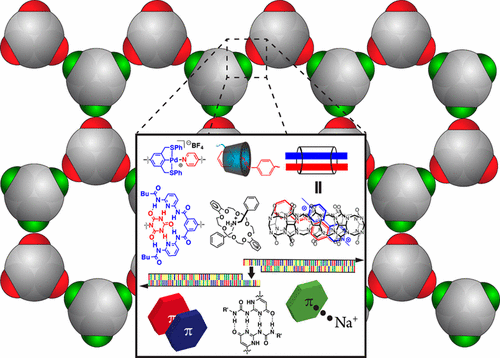当前位置:
X-MOL 学术
›
Acc. Chem. Res.
›
论文详情
Our official English website, www.x-mol.net, welcomes your feedback! (Note: you will need to create a separate account there.)
Molecular Recognition in the Colloidal World
Accounts of Chemical Research ( IF 18.3 ) Pub Date : 2017-10-06 00:00:00 , DOI: 10.1021/acs.accounts.7b00370 Elizabeth Elacqua 1, 2 , Xiaolong Zheng 1 , Cicely Shillingford 1 , Mingzhu Liu 1 , Marcus Weck 1
Accounts of Chemical Research ( IF 18.3 ) Pub Date : 2017-10-06 00:00:00 , DOI: 10.1021/acs.accounts.7b00370 Elizabeth Elacqua 1, 2 , Xiaolong Zheng 1 , Cicely Shillingford 1 , Mingzhu Liu 1 , Marcus Weck 1
Affiliation

|
Colloidal self-assembly is a bottom-up technique to fabricate functional nanomaterials, with paramount interest stemming from programmable assembly of smaller building blocks into dynamic crystalline domains and photonic materials. Multiple established colloidal platforms feature diverse shapes and bonding interactions, while achieving specific orientations along with short- and long-range order. A major impediment to their universal use as building blocks for predesigned architectures is the inability to precisely dictate and control particle functionalization and concomitant reversible self-assembly. Progress in colloidal self-assembly necessitates the development of strategies that endow bonding specificity and directionality within assemblies. Methodologies that emulate molecular and polymeric three-dimensional (3D) architectures feature elements of covalent bonding, while high-fidelity molecular recognition events have been installed to realize responsive reconfigurable assemblies. The emergence of anisotropic ‘colloidal molecules’, coupled with the ability to site-specifically decorate particle surfaces with supramolecular recognition motifs, has facilitated the formation of superstructures via directional interactions and shape recognition.
中文翻译:

胶体世界中的分子识别
胶体自组装是制造功能纳米材料的一种自下而上的技术,其最大的兴趣来自于将较小的构建基元可编程组装为动态晶体域和光子材料。多个已建立的胶体平台具有各种形状和键相互作用,同时实现了特定的方向以及近距离和远距离顺序。它们普遍用作预先设计的体系结构的主要障碍是无法精确地指示和控制粒子的功能化以及随之而来的可逆自组装。胶体自组装的进展使得必须开发赋予组装内结合特异性和方向性的策略。模拟分子和聚合物三维(3D)结构的方法具有共价键合的元素,同时已安装高保真分子识别事件以实现响应性可重构组件。各向异性“胶体分子”的出现,加上用超分子识别基序定点修饰颗粒表面的能力,通过方向相互作用和形状识别促进了上层建筑的形成。
更新日期:2017-10-06
中文翻译:

胶体世界中的分子识别
胶体自组装是制造功能纳米材料的一种自下而上的技术,其最大的兴趣来自于将较小的构建基元可编程组装为动态晶体域和光子材料。多个已建立的胶体平台具有各种形状和键相互作用,同时实现了特定的方向以及近距离和远距离顺序。它们普遍用作预先设计的体系结构的主要障碍是无法精确地指示和控制粒子的功能化以及随之而来的可逆自组装。胶体自组装的进展使得必须开发赋予组装内结合特异性和方向性的策略。模拟分子和聚合物三维(3D)结构的方法具有共价键合的元素,同时已安装高保真分子识别事件以实现响应性可重构组件。各向异性“胶体分子”的出现,加上用超分子识别基序定点修饰颗粒表面的能力,通过方向相互作用和形状识别促进了上层建筑的形成。

























 京公网安备 11010802027423号
京公网安备 11010802027423号